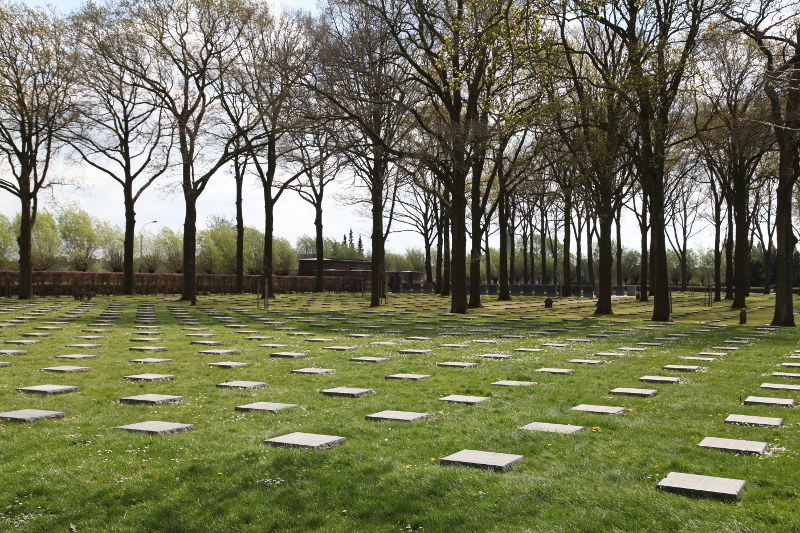The focus of our visit to France and Belgium has been on finding our relatives who died in the Great War and honouring those who died in the Allied forces.
However, with this post, I want to point out that there were two sides to the war and both suffered tremendously. It’s easy to draw lines and call one out one side over the other; but, things aren’t that simple and a visit to Langemarck illustrates this.
There are just as many Canadian flags and impromptu memorials in Langemarck as elsewhere because many Canadians are either the descendants of German Protestants who arrived in Canada in the 1750s or from settlers from arrived during the period between 1874 and 1911.
My great uncle Cliff Hirtle fought for the Royal Canadian Regiment, survived the war, but was permanently damaged by gas in 1917, which ironically was first launched from Langemarck.
His cousin Frank Hirtle, also with the Royal Canadian Regiment, died at the Somme along with many German-born Hertels who fought in the war.
Many Canadians are also the descendants of those families who left Germany in the period between World War 1 & World War 2. Some were starving, some were persecuted… others left because they didn’t want to contribute to the Nazi war machine… some fled Germany because their own family members disappeared and they themselves feared for their lives.
I once rented a room from a professor who was the only son of a German-born, Russian scientist who disappeared in the years prior to the Second World War; no one knows what happened to his father. The family hypothesized that he was killed because of his views. But, it’s still a mystery and will likely never ever be solved. To add insult to injury, on arrival in Canada the professor’s family changed their last name to avoid persecution from Canadians.
Langemarck is one of seven German Cemeteries that exist from the Great War (there are 4 in Belgium and 3 in France). Due to anti-German sentiment, after the war, German bodies were gathered up and graves were consolidated in a handful of common locations (and not left in the battlefield like Commonwealth graves).
Each marker has 16-men buried underneath it and the German War Graves Commission (funded through private donations) takes care of these graves. Later a mass “comrades'” grave was added to the front, which contains the bodies of 24,917 soldiers.

As mentioned above, Langemarck is the place where Germany launched the first gas attacks on the Western Front during the beginning of the Second Battle of Ypres on April 22, 1915.
This first gas attack (chlorine) killed everything: insects, birds, animals, livestock, people… and signalled the beginning of a new and terrifying type of warfare. It’s said that the German troops were so horrified by the carnage caused by the gas that they backed away instead of taking advantage of the newly open lines.